
E-commerce Tech Stack Simplified for Your Business Success
Table of Contents ToggleWhat Is an E-Commerce Tech Stack?Why Your E-commerce...
Back
Back
Search for Keywords...
Blog

Table of Contents
The subscription economy has changed behavior and it impacts our personal and professional worlds in profound ways. From beauty products and clothes to food, music, and razors, there is a service to subscribe to almost anything.
On the business side, the shift to the Cloud is leading to subscriptions being purchased by more and different departments. Unfortunately, the ease of purchase makes it harder for businesses to manage the growing number of subscriptions and providers successfully.
These trends are creating several common challenges in the enterprise, including:
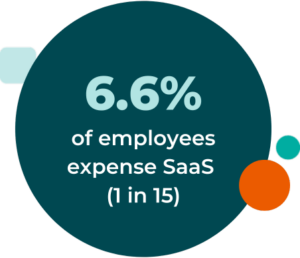 Increased security risk. One in fifteen (6.6%) employees expense SaaS, creating shadow IT. Gartner states that organizations who are not actively managing their SaaS are 5x more susceptible to a cybersecurity incident.
Increased security risk. One in fifteen (6.6%) employees expense SaaS, creating shadow IT. Gartner states that organizations who are not actively managing their SaaS are 5x more susceptible to a cybersecurity incident.While these stats are alarming, this also gives you the opportunity to create value and empower teams. In this article, we’ll dive into those opportunities and SaaS Management best practices.
The shift to the Cloud also presents organizations with a new model for how software can be deployed and used. With easy access and few requirements, SaaS makes it easy for businesses to get the tools they need quickly.
New SaaS tools can be adopted faster – while new tools can be offboarded with ease – creating the opportunity to spur innovation and organize resources with best-in-class tools.
Organizations that actively manage their SaaS have increased opportunities to:
Now is the time for the enterprise to increase the strategic value in the SaaS Management and Optimization process to ensure a secure data environment, promote collaboration across the business, and ultimately drive technology cost efficiency.
It is nearly impossible to lock down all technology purchasing; however, creating different levels of SaaS governance and control based on the investment amount and impact across the business is a good balance.
When the business can take increased responsibility in the smaller, less strategic technology investments and management, the organization can still maintain the speed and agility to benefit from new technology and have less exposure to risk in the larger, strategic applications.
Evolving Your SaaS Governance Framework for the Digital Workplace
Learn MoreSaaS is a growing spend category in tech-forward and traditional enterprises alike. Yet, technology budgets are always scrutinized and often cut. That’s because it is hard to justify the expense and impact on the business.
With a SaaS system of record, the ability to monitor real-time expenses, proactively prepare for renewals, and adjust license deployments as needed makes it easier to prove the value of each application. SaaS budgets can now grow in cost efficient ways that scale with the business.
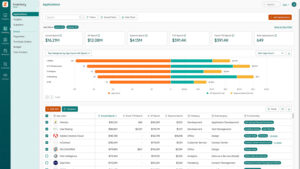
Technology is purchased across business and the role of IT is shifting to lead the overarching technology strategy, security initiatives, and the flow of data and integrations among systems. In fact, IT manages 26% of an organization’s SaaS spend, and just 16% of applications.
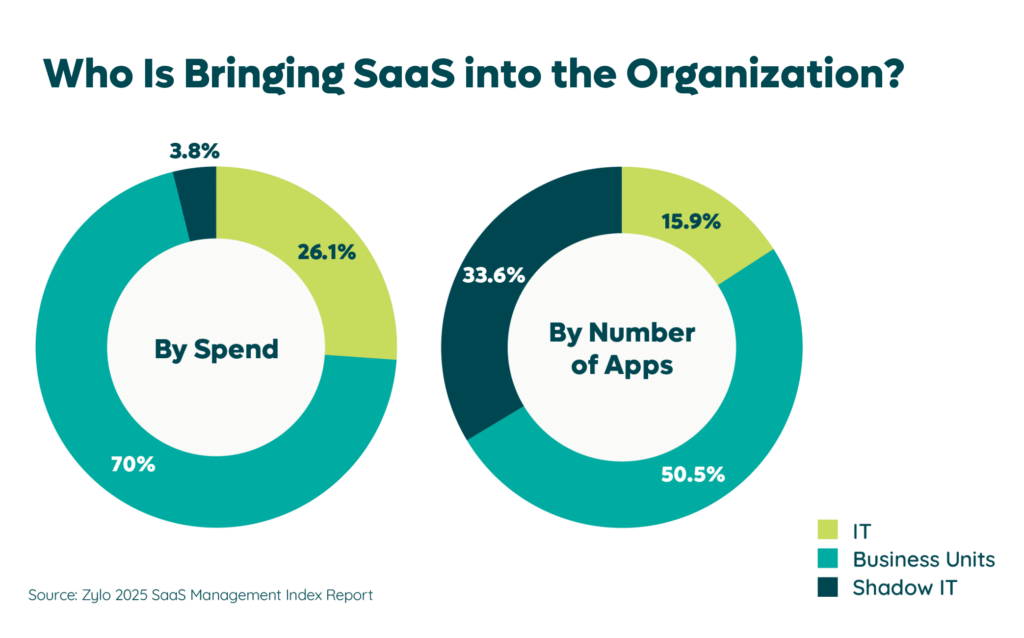
This SaaS Management best practice is meant to create accountability without direct management of teams. For lower cost and less strategic applications, empowering the business to manage their own solution research, trials, implementation, and even administration allows IT and Finance to maintain the centralized view. Those line of business owners can then involve IT as needed for security, contract negotiations, or other strategic reasons.
For the most important SaaS applications, you can analyze which areas of the business need more training or a push for increased adoption. Often, a business’s success depends on how well the entire organization uses technology to differentiate its product, service, or offering in the marketplace.
Identifying which applications are critical to each area of the business. Partnering with leaders in each area is an impactful way to drive value and create a more collaborative environment, which is a key goal of SaaS management best practices.

Understanding cost per license and cost per employee provides actionable data to save money with real-time license management practices. Managing SaaS licenses regularly is the most effective way to avoid unused licenses or unknown over-utilized cost surprises.
Working with business leaders to create a license management process for the largest SaaS deployments is critical to ensure success. Open lines of communication produce a collaborative environment for SaaS.
IT and Finance will often lead SaaS management separately, with one department taking command. While both departments are necessary for proper management, many SaaS Management best practices require or benefit from collaborative management by IT and Finance.
When IT and Finance work together, they can craft a vision for SaaS management and then achieve it with strategic planning across the company.
SaaS renewals are a vast and complicated beast. After all, the average organizations experiences 247 renewals annually, or one per business day. Because of how time- and labor-intensive managing renewals can be, it often becomes a problem of scale for organizations. Meaning, they’re often only targeting a few key renewals, not all of them.
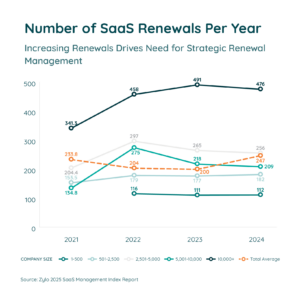
By having a process powered by a SaaS management platform, renewal management becomes more turnkey. Instead of manually tracking down all your contracts, app owners, usage data, among other key data, it’s all at your fingertips. This allows you to focus more on your renewal management strategy and drive your desired outcomes.
The Ultimate Guide for Wildly Effective SaaS Renewals
Learn MoreHalf of the challenges around SaaS optimization have less to do with the actual technology solutions and more to do with the leadership and management approaches in the enterprise. Creating a unified viewpoint on how SaaS applications are supported and developing strong business relationships across the enterprise ensures that whatever process or system is applied, it works.
SaaS Management will continue to be a growing focus area to drive innovation, identify cost savings opportunities, and support overall business growth. Follow these SaaS Management best practices, and you’ll be on your way to creating greater value for your organization and more empowered employees.
Ready to get started on your SaaS Management journey? Zylo is here to help. Request a demo of Zylo’s SaaS Management platform today to better understand and optimize your SaaS investment.

Table of Contents ToggleWhat Is an E-Commerce Tech Stack?Why Your E-commerce...
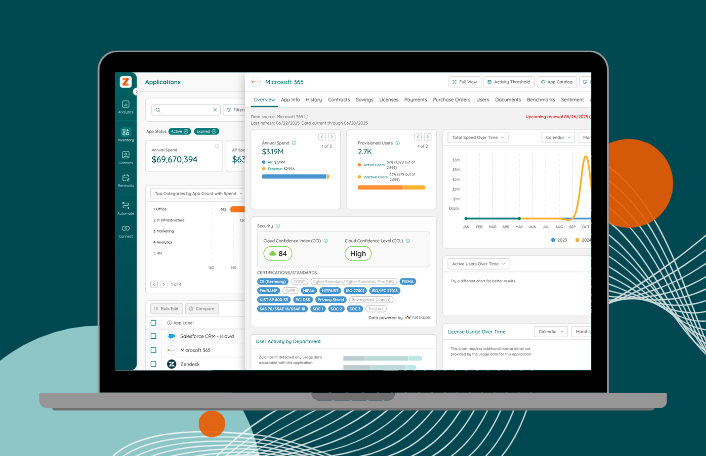
Table of Contents ToggleManaging SaaS Presents Strategic Opportunities7 Best SaaS Management...

Table of Contents ToggleManaging SaaS Presents Strategic Opportunities7 Best SaaS Management...

Table of Contents ToggleManaging SaaS Presents Strategic Opportunities7 Best SaaS Management...
| Cookie | Duration | Description |
|---|---|---|
| cookielawinfo-checkbox-analytics | 11 months | This cookie is set by GDPR Cookie Consent plugin. The cookie is used to store the user consent for the cookies in the category "Analytics". |
| cookielawinfo-checkbox-functional | 11 months | The cookie is set by GDPR cookie consent to record the user consent for the cookies in the category "Functional". |
| cookielawinfo-checkbox-necessary | 11 months | This cookie is set by GDPR Cookie Consent plugin. The cookies is used to store the user consent for the cookies in the category "Necessary". |
| cookielawinfo-checkbox-others | 11 months | This cookie is set by GDPR Cookie Consent plugin. The cookie is used to store the user consent for the cookies in the category "Other. |
| cookielawinfo-checkbox-performance | 11 months | This cookie is set by GDPR Cookie Consent plugin. The cookie is used to store the user consent for the cookies in the category "Performance". |
| viewed_cookie_policy | 11 months | The cookie is set by the GDPR Cookie Consent plugin and is used to store whether or not user has consented to the use of cookies. It does not store any personal data. |
